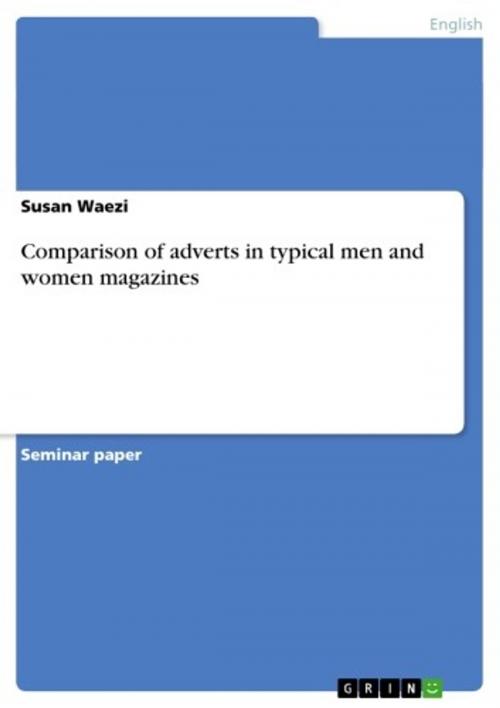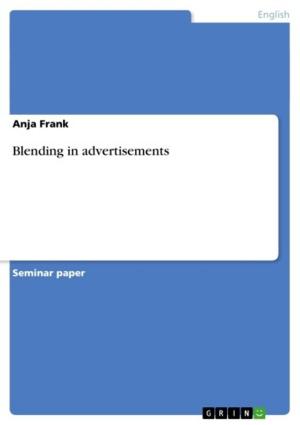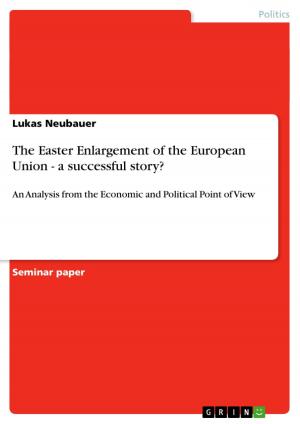Comparison of adverts in typical men and women magazines
Nonfiction, Reference & Language, Study Aids, ESL, Foreign Languages| Author: | Susan Waezi | ISBN: | 9783638613835 |
| Publisher: | GRIN Publishing | Publication: | March 1, 2007 |
| Imprint: | GRIN Publishing | Language: | English |
| Author: | Susan Waezi |
| ISBN: | 9783638613835 |
| Publisher: | GRIN Publishing |
| Publication: | March 1, 2007 |
| Imprint: | GRIN Publishing |
| Language: | English |
Seminar paper from the year 2006 in the subject English Language and Literature Studies - Culture and Applied Geography, grade: 2,0, University of Duisburg-Essen (English departement at Duisburg-Essen University), course: Mediawatch SS 2006, 6 entries in the bibliography, language: English, abstract: How would be a world without advertisement? Would it still be possible to attract people for special goods or products? Advertisement means communication, and without communication it is almost impossible to call attention to what one would like to bring to market. So adverts provide a well-directed and conscious influence on human beings. But how different can such an influence be in men and women magazines? In the following essay I am going to write about British magazines, especially about advertisement that is made in typical men and women magazines, whereby I try to work out the details of possible differences between the adverts - if there are some at least. I will concentrate on only two magazines that are: Company and Maxim; two typical men and women magazines that I have chosen unintended to find some interesting adverts by chance. The first step will be that I will briefly introduce the two magazines to get an overview about their contents and the main topics they write about. After this I am going to give examples for adverts in men and women magazines, from each of the two introduced magazines three. I will try to describe them in detail and illustrate their intentions towards their readers and audience respectively. Especially how the adverts are made up and which techniques the advertisers use, belong to the main point of this essay. Finally I am going to compare the three adverts of both magazines with each other and try to find out some differences between, or maybe common grounds with advertisement in men and women magazines. In this connexion I will draw a conclusion and sum up my results that I hopefully will get from my breakdown. [...]
Seminar paper from the year 2006 in the subject English Language and Literature Studies - Culture and Applied Geography, grade: 2,0, University of Duisburg-Essen (English departement at Duisburg-Essen University), course: Mediawatch SS 2006, 6 entries in the bibliography, language: English, abstract: How would be a world without advertisement? Would it still be possible to attract people for special goods or products? Advertisement means communication, and without communication it is almost impossible to call attention to what one would like to bring to market. So adverts provide a well-directed and conscious influence on human beings. But how different can such an influence be in men and women magazines? In the following essay I am going to write about British magazines, especially about advertisement that is made in typical men and women magazines, whereby I try to work out the details of possible differences between the adverts - if there are some at least. I will concentrate on only two magazines that are: Company and Maxim; two typical men and women magazines that I have chosen unintended to find some interesting adverts by chance. The first step will be that I will briefly introduce the two magazines to get an overview about their contents and the main topics they write about. After this I am going to give examples for adverts in men and women magazines, from each of the two introduced magazines three. I will try to describe them in detail and illustrate their intentions towards their readers and audience respectively. Especially how the adverts are made up and which techniques the advertisers use, belong to the main point of this essay. Finally I am going to compare the three adverts of both magazines with each other and try to find out some differences between, or maybe common grounds with advertisement in men and women magazines. In this connexion I will draw a conclusion and sum up my results that I hopefully will get from my breakdown. [...]















